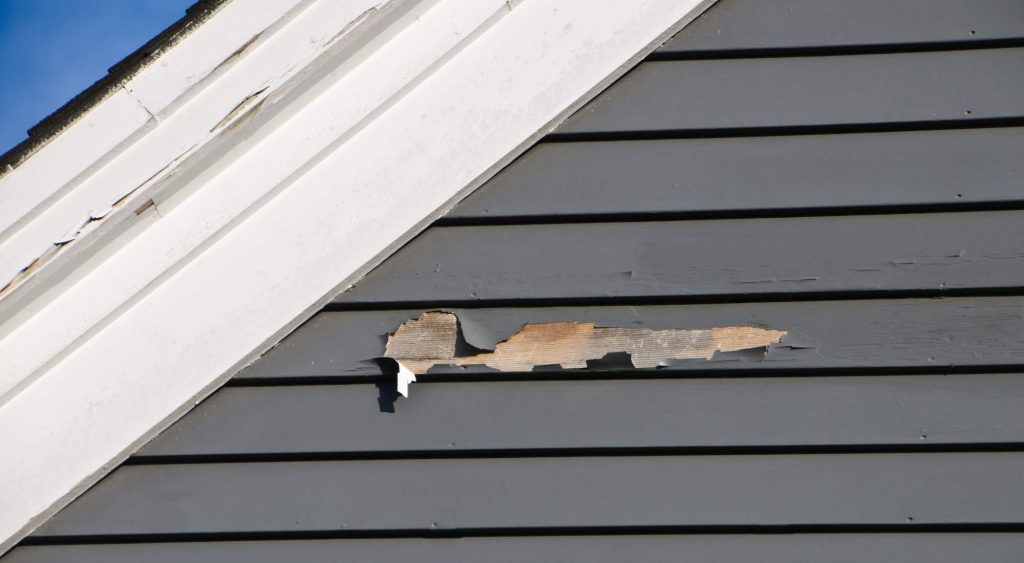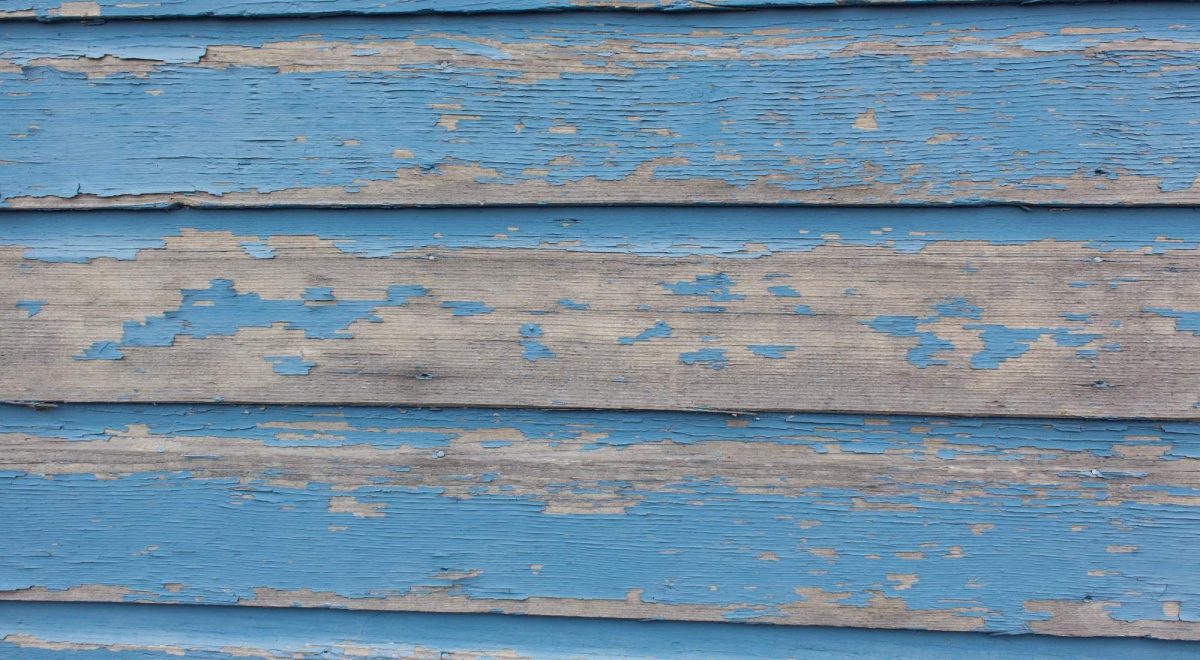Is the flaking paint on your exterior walls standing in the way of returning your home to its original glory?
Whether the peeling paint on your home reflects decades as a loving shelter or bouts with extreme weather, it’s time to give your home the facelift it deserves.
But the paint removal process can be laborious and time-consuming.
The good news is –– with the right tools, a little patience, and this guide, you can successfully tackle the task of removing that pesky flaking paint from your exterior walls.
Table of Contents
- Why Is it Important to Remove Any Flaking Paint Before Repainting the Exterior of Your Home?
- How Do You Remove Peeling Paint from Exterior Walls?
- How to Remove Flaking Paint from Exterior Walls: 3 Methods
- What Is the Best Way to Remove Peeling Exterior Paint?
- What Precautions Should Be Taken When Removing Flaking Paint From Exterior Walls?
- Let the Professionals at A1 Paint Removal, Painting, & Restoration Help With Your Exterior Flaking Paint
Why Is it Important to Remove Any Flaking Paint Before Repainting the Exterior of Your Home?
Don’t make the grave mistake of thinking that you can simply paint over the flaking paint on your exterior walls.
Failing to properly prepare your surface for its new paint job will result in the need to repaint year after year.
Removing the flaking paint from your surface is the first and most important step.
It’s also important to consider the surface that’s been painted.
This guide will address how to remove peeling paint from exterior wood trim and plastic exterior surfaces.
If you’re working with a brick exterior, check this guide to learn about the different tools and products you’ll need.
Would you rather leave your paint removal project up to the pros? With over 25 years of experience, A1 Paint Removal, Painting, and Restoration guarantees your complete satisfaction regardless of the exterior surface of your home.
How Do You Remove Peeling Paint from Exterior Walls?
There are many ways to remove peeling paint from your exterior walls, depending on the …
- Type
- Amount; and
- Location
… of the paint you need to remove.
To help you decide on the best way to remove peeling exterior paint, we’ve compiled the three top methods of paint removal, along with advice on what not to use for each method.
How to Remove Flaking Paint from Exterior Walls: 3 Methods
#1: Abrasive Method
The abrasive method entails applying a good amount of elbow grease, so be ready to roll up your sleeves.
Wearing away the paint using friction by …
- Rubbing
- Sanding; or
- Scraping
… with a putty knife or a paint scraper will help you free any loose pieces of paint.
This method is great for removing all types of paint in smaller areas, unless you’re up for the hard labor of scraping your entire exterior.
After applying friction, you’ll want to smooth out the area by using:
- Sandpaper
- Orbital sanders; or
- Belt sanders
What NOT to Use for This Method
With the abrasive method, you want to avoid using:
- Rotary drill attachments
- Pressure washers; and
- Sandblasters
Beware of methods like these that apply pressure above 600psi.
These types of tools will remove paint from both metal and wood –– and if you’re not careful they’ll strip away more of your surface along with the paint or varnish.
Instead, try using a garden hose to easily wash away leftover debris.
#2: Thermal + Abrasive Method
This method involves using thermal energy to cause the paint to: bubble, blister, and lose its bond to the surface.
The thermal + abrasive method is fast and relatively cheap.
It’s especially easy if you’re removing acrylic or latex paint.
With heat, the paint softens, making it easy for you to follow up with one of the above-mentioned scraping methods to peel the paint –– with little to no damage to the surface beneath.
If you have thick layers of built-up paint, try using thermal tools that heat to 500 to 800 degrees Fahrenheit, like:
- An electric heat plate
- An electric heat gun; or
- A hot air gun
What NOT to Use for This Method
Don’t be tempted to think, ‘the hotter, the better.’
That type of thinking will only burn you in this case.
Stay away from using a blow torch or propane torch.
Aside from the dangers of using an open flame, a blow torch can get upwards of 1,250 degrees Fahrenheit, which can burn wood-siding and cause a fire.
Plus, if you’re working with lead paint, applying an open flame may release fumes that are dangerous to your health.
#3: Chemical + Abrasive Method
In this method, chemical paint strippers are applied directly to the paint surface.
After some time, the chemicals begin to bubble and soften the paint, making it easier to scrape away.
Look for chemicals classified as …
- Solvent-based strippers
- Caustic strippers; or
- Biochemical, also known as eco-chemical strippers
The chemical and abrasive method is best used for small areas or ornamental surfaces.
What NOT to Use for This Method
Be forewarned that most chemical strippers can be harmful to the environment and you.
That’s why it’s best to only use chemical strippers as the first step to your paint removal process.
Avoid using chemicals as your sole paint removal method.

What Is the Best Way to Remove Peeling Exterior Paint?
In addition to the …
- Types
- Amount; and
- Location
… of the paint you want to remove, other factors will help you determine the best way to remove peeling exterior paint.
It’s also important to consider whether there is …
- Buildup
- Cracking
- Blistering
… or other conditions that can happen to paint over time.
Leave it up to the professionals at A1 Paint Removal, Painting, and Restoration to determine the best way to remove your peeling exterior paint.
A1 Paint Removal, Painting, and Restoration can handle your entire painting project, including:
- Paint removal
- Interior painting; and
- Exterior painting
What Precautions Should Be Taken When Removing Flaking Paint From Exterior Walls?
If your home was built before 1978, you’ll likely be working with lead-based paint.
Working with lead paint requires extra time, precautions, and equipment to ensure the paint is removed safely with the right method and products.
Regardless of your paint removal method, it’s important to:
- Read all the manufacturer’s directions and materials that come along with any equipment or product you are using.
- Take your time and do not use shortcuts.
- Use only the recommended methods, and do not combine methods to address stubborn areas. Stick to the initial method you used and try multiple applications if needed.
- Remember to wear protective gear, especially when working with chemical strippers, including:
- Goggles
- Long-sleeved shirt
- Face mask or respirator; and
- Work gloves
Let the Professionals at A1 Paint Removal, Painting, & Restoration Help With Your Exterior Flaking Paint
Whether you’ve got a historical gem or would just rather leave the daunting task to the pros, A1 Paint Removal, Painting, and Restoration can help you restore your home’s beauty without worry.
At A1 Paint Removal, Painting, and Restoration, we have over 25 years of experience with projects of all kinds — including historic homes and commercial architectural legacies.
We use only the best and most current techniques in the business, including:
- Green, chemical-free methods
- A rigorous prep protocol; and
- A cleanup protocol that leaves no trace behind
Give us a call today for a free, easy-to-understand estimate — with no hidden fees.





